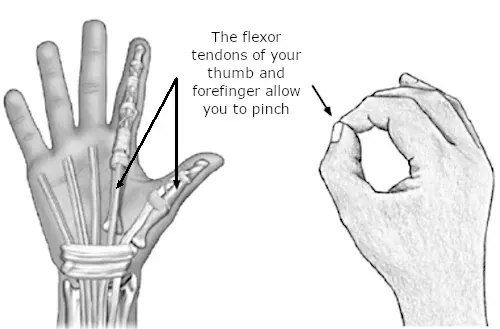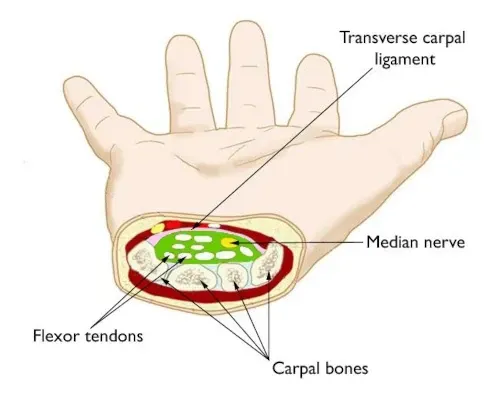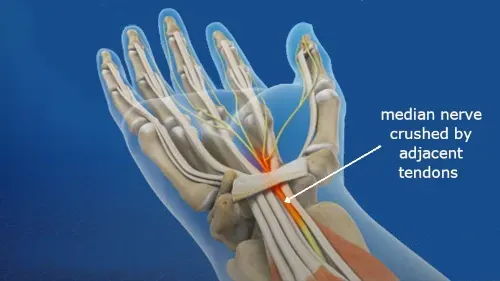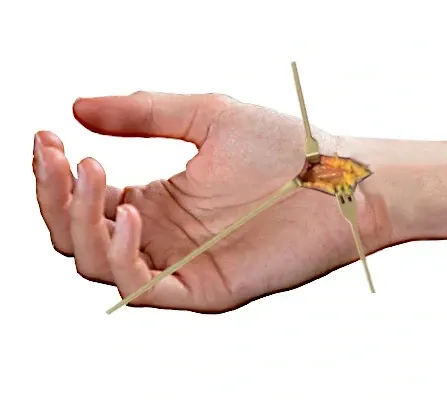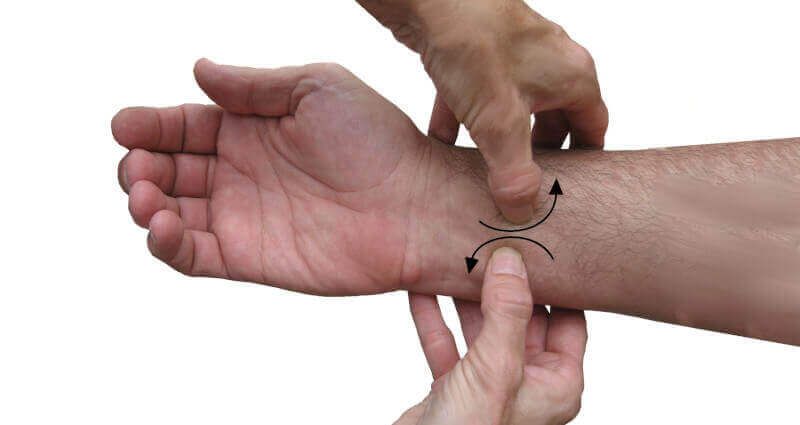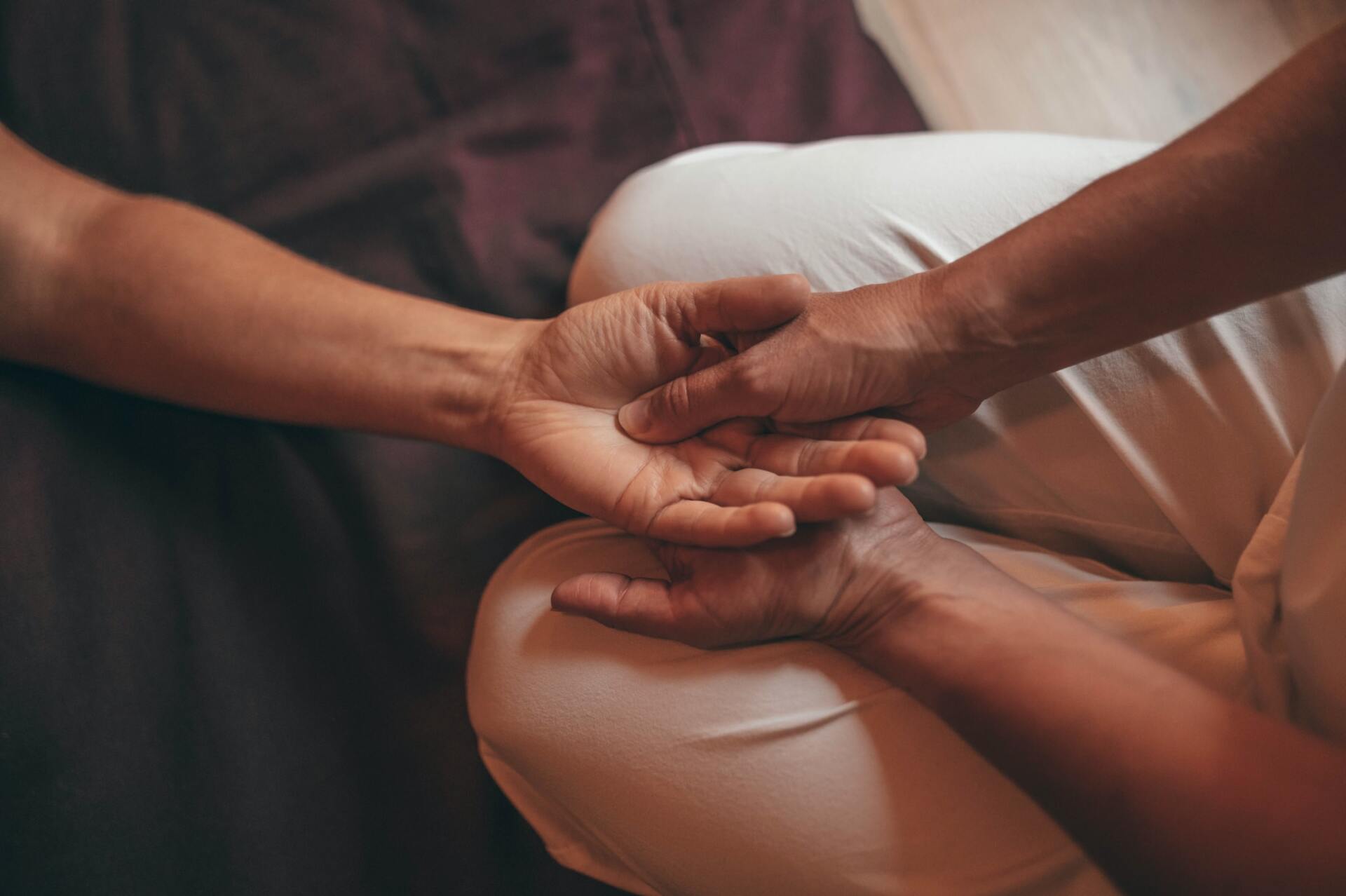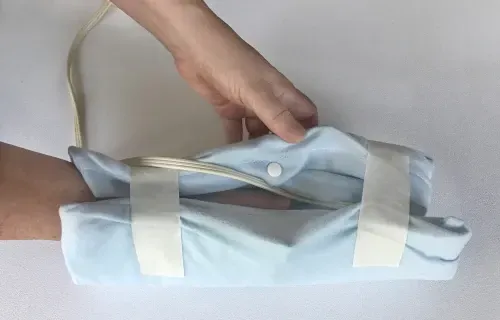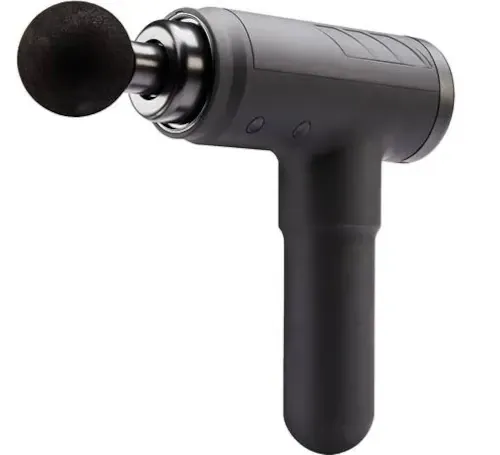Flexor tendons inside the carpal tunnel space
When your forearm’s flexor tendons swell inside your wrist joint, the result is not just simple pain at that point. It's carpal tunnel syndrome.
Inside the wrist joint, the flexor tendons pass through a narrow passageway called the carpal tunnel space (see illustration above). In addition, the
median nerve (a major nerve to the hand) also runs alongside the tendons inside the carpal tunnel space.
When the flexor tendons swell inside the already-crowded carpal tunnel space, they push against the (much softer) median nerve. This compresses the nerve. And this nerve compression is what causes all of the
symptoms of carpal tunnel syndrome. They include pain, numbness, tingling, burning, weakness, and clumsiness in your hand and fingers.
How to solve the tendon problem
So what’s the best way to eliminate carpal tunnel symptoms?
You must relieve pressure on the median nerve.
This pressure relief can be achieved using one of two methods: surgery or myofascial massage.
1. SURGERY to eliminate carpal tunnel syndrome
2. MYOFASCIAL MASSAGE to eliminate carpal tunnel syndrome
How to perform myofascial massage for carpal tunnel
Myofascial massage is a type of manual or
manipulative therapy designed to relieve carpal tunnel syndrome. It effectively breaks up the adhesions on tendons which cause this disorder.
Getting started
You will need three things to properly perform myofascial massage for carpal tunnel syndrome.
- A willing partner
- Skin lotion
- Commitment to 15 minutes of time, morning and evening, for at least 30 days
Follow these 8 easy Steps
Step 1
Establish a regimen. In order to completely eliminate carpal tunnel symptoms, you must receive myofascial massage for at least 30 days. More severe symptoms, particularly
numbness and tingling, will require 2-3 additional weeks.
Step 2
Rub skin lotion around the palm-side area of your wrist joint. Cover about 1-2 inches of the forearm. This will reduce skin irritation resulting from the massage.
Step 3
Place your hand on a firm surface, like a table or your lap, with your palm facing up. Next, your partner will hold your wrist area with both hands. Both of their thumbs should be on your wrist, about 1 inch apart.
See image below.
Step 4
Your partner should rotate both of their thumbs in a circular motion. The speed of rotation should be about once every 1-2 seconds. The circular thumb motions must be counter-rotating (moving in opposing directions). And the thumbs repeat the circular pattern over and over. When properly done, the shearing force makes the skin look like it’s being kneaded, like bread dough.
Step 5
Never keep the massaging thumbs in the same area of the forearm for more than a few rotations. Instead, move the rotations slightly up and down your lower wrist and forearm by 1-2 inches.
Step 6
Perform the kneading massage for 15 minutes. Rotating the thumbs in one spot for a few rotations, then moving them by an inch, should cover your entire lower wrist after about 1-2 minutes. Then simply repeat the pattern over and over again until the rotating thumbs have kneaded the entire lower forearm multiple times.
Step 7
This 15-minute massage must be performed
morning and evening, for a minimum of
30 days.
About 2-3 additional weeks will be required to eliminate more
severe symptoms, particularly severe numbness and tingling.
Step 8
Be patient. Myofascial massage for carpal tunnel is not an overnight cure for this disorder. Therefore, faithfully follow your daily regimen for at least 30 days. Keep in mind that it (literally) took years for you to acquire carpal tunnel syndrome. So this remedy will not relieve symptoms overnight.
Tips for a better experience
The following tips will help you get the most from your massage technique.
1. Find a quit place for you and your partner to perform your daily massages. Minimal distractions are best. Background music or television can help the time go faster.
2. The circular rotating motions should be moved up and down your forearm, as well as side-to-side. This will ensure complete coverage.
3. Most therapists use as much massage pressure as the patient can bear without it being too uncomfortable.
4. Immediately after your
evening massage, warm you hand and wrist with a
heating pad.
It’s best if you roll the heating pad into a tube so that both sides of your hand & wrist are warmed. You can hold the rolled-up shape with adhesive tape. Use a low or medium heat setting. Heat increases healing blood flow and helps boost the effects of the massage.



